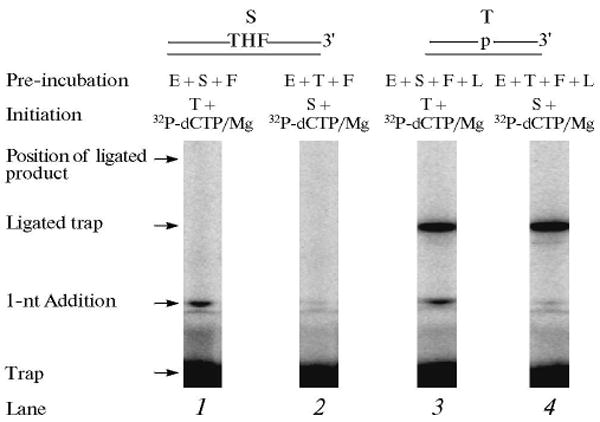Fig. 13.

Gap-filling, FEN1 cleavage and ligation steps in LP BER. Schematic representations of APE1-treated THF-DNA substrate (S), LP BER intermediate, and the DNA trap (T) are illustrated above the phosphorimage of the gels. E, F, and L denote polymerase β, FEN1, and DNA ligase I, respectively. The repair reaction mixture was assembled on ice, either with polymerase β, FEN1 substrate DNA (lane 1) or with polymerase β, FEN1, DNA ligase I, and substrate DNA (lane 3). The reactions were initiated by the addition of a mixture of [α-32P]dCTP, dATP, dGTP, TTP, ATP, DNA trap, and MgCl2 (lanes 1 and 3). In another set of reaction mixtures, polymerase β and FEN1 or polymerase β, FEN1 and DNA ligase I were pre-incubated with the DNA trap first, and the reactions were initiated by adding a mixture of [α-32P]dCTP, dATP, dGTP, TTP, ATP, substrate DNA, and MgCl2 (lanes 2 and 4). Reaction mixtures were incubated for 10 s and analyzed. The positions of 1-nt gap-filling product, ligated BER product, free-labeled trap, and the ligated labeled trap are indicated.
